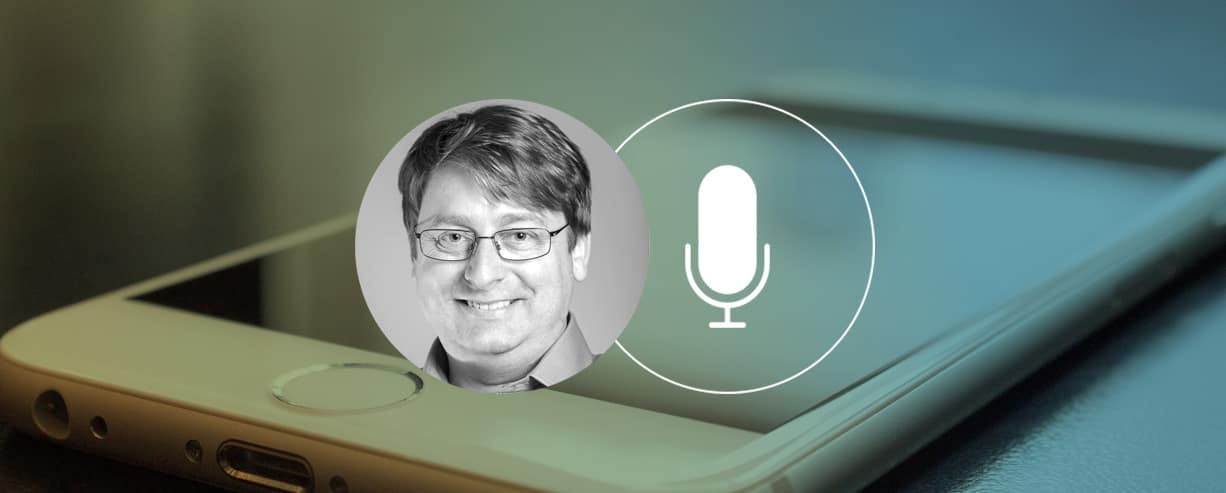
Our Interview with Infosys AVP and Global Head of Experience Design Jason Wolf on the M1 Podcast
- Podcast /
- Product Design /
- Product Leadership /
Mobile First Podcast Episode 54
Jason Wolf is AVP and Global Head of Experience Design at Infosys. An author, Apple ‘think different’ producer, worked with Steve Jobs, Bill Gates, Hasso Plattner & Vishal Sikka. Practice lead at IDEO, old-School employee of Macromind (later Marcomedia) makers of director and flash technology. Authored first books on shockwave technology. Design thinking strategist and innovation change agent. He is a father of 3, maker, film maker and over all artist.
How to get this week’s and past podcast episodes:
The Mobile First podcast is available for free on iTunes where you can easily download it straight to your computer or mobile device. We encourage you to subscribe to the Mobile First podcast on iTunes so you won’t miss an episode. If you are an Android user, you can also download the podcast for free through Stitcher. If you don’t have access through iTunes or your phone, you can download the podcast here or listen straight from the player below:
Key Insights from our Conversation
- Anything from the creative aspects of art is what inspires Jason. He draws a lot of his inspiration from films, television, books, other authors, and websites—anything out there from the abstract to the total tangible. He loves to consume that, makes sense out of it and use it in his everyday work to give people things that they have never seen before and make their lives more interesting.
- Art has always been something which has interested Jason, whether this is doodling or scribbling at 6 years old to water color paintings. He found that the reaction that he would get from others is what drives him to do this.
- In the 90s, he found himself in his cubicle observing how hundreds of employees were so out of touch while they are working towards one goal. He thought, if he was the owner of the company, he would ensure interaction amongst employee and with customers to drive innovation. He would create a culture where everyone is on a level playing field. This will snowball to happier employees who can laugh and joke about things which can spawn to a more comfortable, creative environment.
- Jason looks at a career in three phases: when you first join a company, when you are cruising along or in cruise control and when you feel like you are winding down. He shares that at one point, when he would feel that he will not be staying with the company much longer, he would become a rebel. This would either accelerate the speed of him leaving the company or people will turn around and say that it was cool and he gets promoted. His realization from this is that he should’ve expressed himself from the get go. But to those who want to do this, you need to note that this has a lot to do with the management so feel out the environment that you are in and explore their receptiveness prior. There is no company which do not want to be innovative; they just need to understand the reasoning behind the first couple of steps that you are taking. This is the key so show them.
- Jason shares that he embodies design thinking. You will know that you do too if you are still thinking about design even if you are no longer at work. You can walk into a restaurant and just see a Push/Pull sign but with no handle and go, ‘Who designed this?’ This is important because to help a company innovate or change is to be the change. You have to embody or imbue this energy yourself.
- To incorporate design thinking in your company, have different entry points to make it really easy for people in whatever level to get into this. Then run this through a lean method approach to measure learning to ensure that you meet whatever outcome you want it to have. Continue what works and get rid of those which do not. Adapt the technique of incremental fusion of design thinking as well where you would start small to get buy ins, continue building rapport, and have the fusion continue to gain momentum as it gets those successes. There are also specific items which a company should have to promote design thinking so ensure that you work in the background to provide these resources to make this successful. There is no company out there that this design thinking process can’t help innovate on. This is not just for technology or programmers only so this means that if you see problems in the world, you can fix those problems.
Rapid Fire Questions
- What is your definition of innovation?
Innovation is the extraction or the finding of something useful to a human.
- Would you put more emphasis on the idea or the execution? How would you weigh each of them and why?
I’d put 99% of my energy in the idea as I am 100% confident in my and my team’s ability to execute. I’ll all about idea generation.
- What is your biggest learning lesson on your journey so far?
My biggest learning experience came from meeting with customers so no matter how much you study design thinking, not until you actually interface with a human and have empathy for them, will you realize the actual power that design thinking has.
- What is your favorite business book?
The Universal Principles of Design
Cinefex
- What is your favorite digital resource?
IDEO
Standford d.school
- What is your favorite app?
Messages
Siri
Safari
Phone